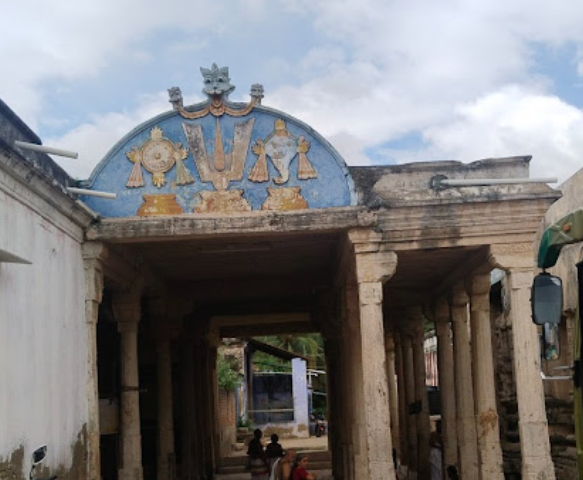Origin/History :-
The history of the Makara Nedunkuzhaikathar Temple in Thenthiruperai is deeply rooted in the ancient traditions of Tamil Nadu, particularly in connection with the Chola and Pandya dynasties. While the exact builder of the temple remains unclear, it is believed that the temple dates back to the early mediaeval period, around the 9th to 12th centuries CE, during the rule of the Pandya kings. The temple's architectural style and inscriptions suggest strong influences from both the Pandya and Chola dynasties.
The temple was likely constructed or significantly expanded during the reign of these dynasties, who were known for their patronage of Vishnu temples. The temple may have undergone various renovations and expansions over the centuries, with contributions from later rulers, including the Nayaks, who played a significant role in maintaining and enhancing many temples in Tamil Nadu during the 16th to 18th centuries.
The temple's association with the Nava Thirupathis, the nine temples along the Thamirabarani River, further underscores its importance in the region's religious history. The exact periods of renovations and specific contributors to the temple's upkeep are not well-documented, but it is evident that the temple has been an important centre of worship for centuries.
Puranic Significance :-
According to a mythological story, Goddess Lakshmi, also known as Sridevi, felt upset because she believed that Lord Vishnu spent more time with Goddess Bhudevi, who appeared more beautiful. Seeking to match Bhudevi's beauty, Lakshmi confided in Sage Durvasa, expressing her wish to attain the same form and appearance as Bhudevi. However, when Sage Durvasa later visited Bhudevi, she did not welcome him with due respect. This angered the short-tempered sage, who cursed Bhudevi to take on the form of Sridevi.
To regain her original form and the love of Lord Vishnu, Bhudevi undertook severe penance on the banks of the Thamirabarani River. During her penance, she discovered two beautiful earrings shaped like fish and offered them to Lord Vishnu on the auspicious day of Panguni Pournami, the Full Moon day in March-April. Pleased with her devotion and offering, Lord Vishnu accepted the earrings, adorned himself with them, and lifted the curse from Bhudevi.
In Tamil, "Makara" means fish, and the Lord, who wore the fish-shaped earrings, came to be known as Makara Nedunkuzhaikathar. Bhudevi, who had to take on the form of Lakshmi and offered the earrings, became known as Sri Perai or Thiruperai Nachiyar. Since then, this place has been called Thiruperai.
